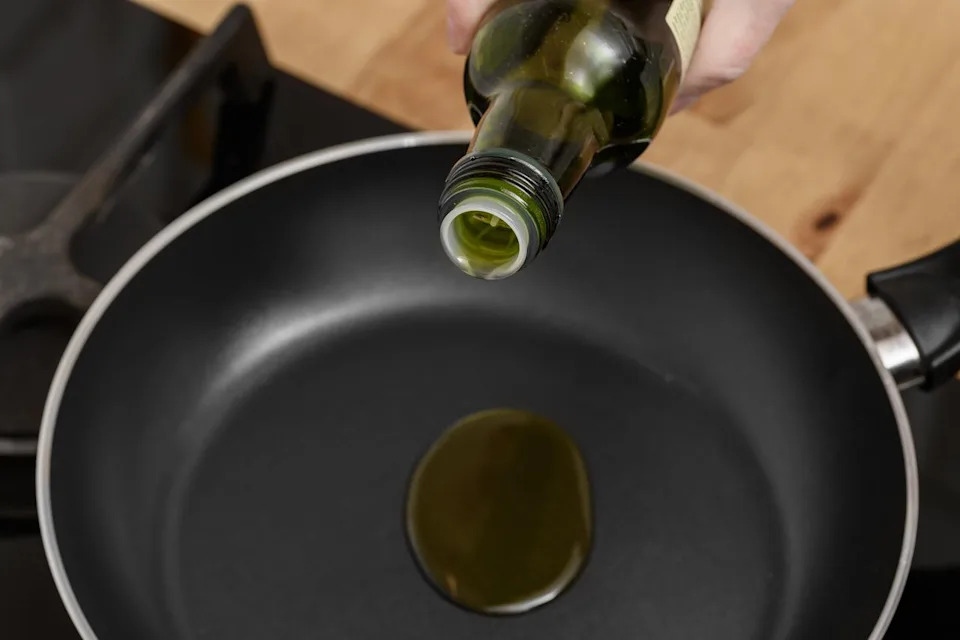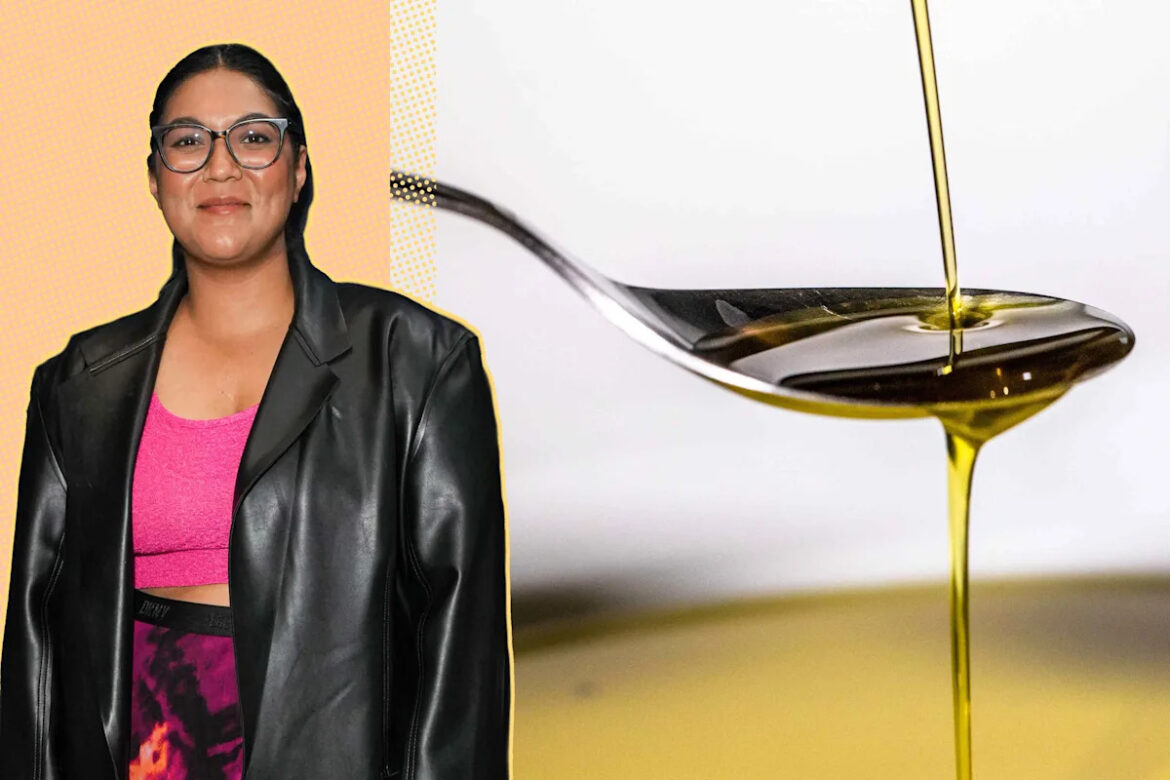The other day, my editor shared this clever Instagram video from chef Sohla El-Waylly that made me stop mid-scroll. The food phenomenon was talking about frying in olive oil and explaining why it’s perfectly fine to use for high-heat cooking. I was surprised and intrigued!
I’d always been under the impression that olive oil had a low smoke point and wasn’t great for anything that required high heat. But hearing El-Waylly say, “I don’t know who started these lies, but you can fry in the oil of olives and use it for all of your high-temperature cooking. It’ll be fine, I promise!” made me want to find out if it was true.
Being the food nerd that I am, I headed to Google Scholar to find current peer-reviewed journal articles to see if I could back up her claims, and it turns out, she was right! Olive oil is one of the most stable oils you can cook with, and it might even be better for high-heat cooking than the neutral oils most of us typically reach for. If you love olive oil as much as I do and wish you could use it for more than just drizzling, this is a game-changer.
The Difference Between Extra-Virgin Olive Oil and Refined Olive Oil
Let’s start with the basics. Extra-virgin olive oil is basically the “fresh-squeezed” version of olive oil. It’s just pressed olives, with no heat or chemicals, and it produces a rich, intense flavor. Refined olive oil is what you’d reach for when you need something milder and more heat-friendly. It’s gently processed and filtered to smooth out the taste and bump up the smoke point.

Simply Recipes / Getty Image
Why Olive Oil Isn’t as Delicate as You Think
“People freak out that it’s delicate when you heat it, but it’s actually super stable,” El-Waylly says. And she’s generally right, from what I’ve learned by digging into the research. The concern about olive oil and high heat stems from a misunderstanding of the distinction between smoke point and stability.
Extra-virgin olive oil’s smoke point sits around 400°F. While exact values vary, many cooking-oil guides list the smoke point of extra-virgin olive oil as 350°F to 410°F. The actual smoke point depends on the brand and method of refinement and processing.
Refined olive oil, on the other hand, typically ranges between 390°F and 410°F, which is “higher than some canola oil,” explained El-Waylly. While smoke point is an important factor, it alone doesn’t tell you how well an oil holds up when you cook with it.
Another important consideration is the oil’s chemical structure—and this is where it gets a bit science-y. Olive oil is high in monounsaturated fats (MUFAs), meaning it has just one double bond. Polyunsaturated fats (PUFAs), such as those found in sunflower, canola, and corn oil, contain multiple double bonds. “Each double bond is a point where oxidation can happen,” explains El-Waylly. Ultimately, PUFAs are more prone to oxidation when they’re heated. Because olive oil is relatively high in MUFAs and lower in PUFAs, it has an advantage in this respect.
When those bonds break, it changes the oil’s structure, flavor, and health properties. Olive oil, fortunately, is rich in antioxidants that also help protect it from breaking down when heated. When you heat any cooking oil, it will break down and create compounds you’d rather avoid, “but studies have found that olive oil creates fewer of these compounds than sunflower or canola oil, even with repeated heating,” says El-Waylly. When it comes to frying, olive oil proves impressively resilient. Not only is it safe for higher-heat cooking, but it also creates fewer of those breakdown compounds than the oils we’ve been told are better for frying.
Which Oil Should You Use, and When?
If you love olive oil, but also care about your bank account, don’t worry. You don’t need to fry anything in your fancy bottle of extra-virgin olive oil. “You’ve got to save the good stuff for drizzling,” enthuses El-Waylly. Reach for the EVOO when you’re finishing dishes, dressing salads, and dipping bread—all the places where you can really taste and appreciate it.
For everyday higher-heat cooking, such as sautéing, pan-frying, and roasting, refined or light olive oil is among the better options. Light olive oil is filtered to increase its smoke point; it has “a mild flavor and [is] cheaper than EVOO,” says El-Waylly.
One note of caution: For very high-temperature cooking, such as deep-frying, or for long-term reuse of oil, other oils, such as refined avocado oil and sunflower oil, are suggested.
Knowing that my preferred oil is not only delicious but also one of the safest and most stable options for high-heat cooking is the kind of “news” I love to hear. If you’re an olive oil lover too, don’t hesitate to reach for it for everyday cooking. You’ve got science—and the chefs—on your side.
Read the original article on Simply Recipes


Dining and Cooking